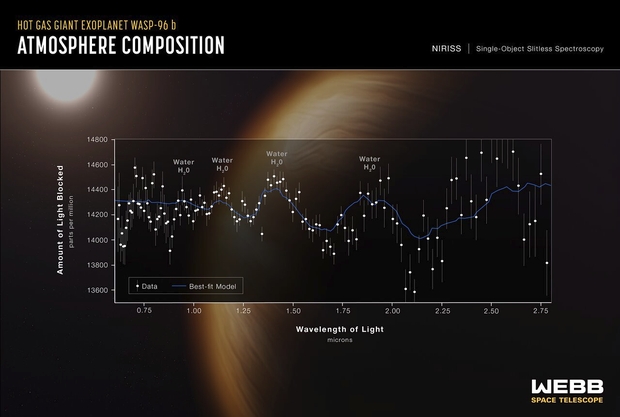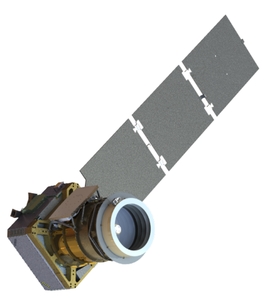I’ve been digging into NASA’s Small Spacecraft Strategic Plan out of continuing interest in missions that take advantage of miniaturization to do things once consigned to large-scale craft. And I was intrigued to learn about the small spacecraft deployed on Apollo 15 and 16, two units developed by TRW in a series called Particles and Fields Subsatellites. Each weighed 35 kilograms and was powered by six solar panels and rechargeable batteries. The midget satellites were deployed from the Apollo Command and Service Module via a spring-loaded container giving the units a four foot-per-second velocity. Apollo 15’s operated for six months before an electronics failure ended the venture. The Apollo 16 subsatellite crashed on the lunar surface 34 days into its mission after completing 424 orbits.
Here I thought I knew Apollo history backwards and forwards and I had never run into anything about these craft. It turns out that smallsats – usually cited as spacecraft with weight up to 180 kilograms – have an evocative history in support of larger missions, and current planning includes support for missions with deep space applications. Consider Pandora, which is designed to complement operations of the James Webb Space Telescope, extending our knowledge of exoplanet atmospheres with a different observational strategy.
JWST puts transmission spectroscopy to work, analyzing light from the host star as a transiting planet moves across the disk. A planet’s spectral signature can thus be derived and compared to the spectrum taken when the planet is out of transit and only the star is visible. This is helpful indeed, but despite JWST’s obvious successes, detecting the atmosphere of planets as small as Earth is a challenge. The chief culprit is magnetic activity on the star itself, contaminating the spectral data. The Pandora mission, a partnership between NASA and Lawrence Livermore National Laboratory, mitigates the problem by collecting long-duration observations at simultaneous visible and infrared wavelengths.

Image: A transmission spectrum made from a single observation using Webb’s Near-Infrared Imager and Slitless Spectrograph (NIRISS) reveals atmospheric characteristics of the hot gas giant exoplanet WASP-96 b. A transmission spectrum is made by comparing starlight filtered through a planet’s atmosphere as it moves across the star, to the unfiltered starlight detected when the planet is beside the star. Each of the 141 data points (white circles) on this graph represents the amount of a specific wavelength of light that is blocked by the planet and absorbed by its atmosphere. In this observation, the wavelengths detected by NIRISS range from 0.6 microns (red) to 2.8 microns (in the near-infrared). The amount of starlight blocked ranges from about 13,600 parts per million (1.36 percent) to 14,700 parts per million (1.47 percent). Credit: European Space Agency.
Stellar contamination produces spectral noise that mimics features in a planetary atmosphere, or else obscures them, a problem that has long frustrated scientists. Collecting data at shorter wavelengths than JWST’s shortest wavelengths (0.6 microns) helps get around this problem. Pandora’s visible light channel will track the spot-covering fractions of surface stellar activity while its Near-Infrared channel will simultaneously measure the variation in spectral features as the star rotates. A more fine-grained correction for stellar contamination thus becomes possible, and as the new paper on this work explains, the ultimate objective then becomes “…to robustly identify exoplanets with hydrogen- or water-dominated atmospheres, and determine which planets are likely covered by clouds and hazes.”
Pandora will operate concurrently with JWST, complementing JWST’s deep-dive, high-precision spectroscopy measurements with broad wavelength, long-baseline observations. Pandora’s science objectives are well-suited for a SmallSat platform and illustrate how small missions can be used to truly maximize the science from larger flagship missions.

The plan is for the mission to select 20 primary exoplanet host stars and collect data from a minimum of 10 transits per host star, with each observation lasting about 24 hours, producing 200 days of science observations. The lengthy data acquisition time for each star means an abundance of out-of-transit data can be collected to address the problem of stellar contamination. The primary mission has a lifetime of one year, which allows for a significant range of science operations in addition to the above.
Long-duration measurements like those planned for Pandora contrast with data collection on large missions like JWST, which often focus on one or a small number of transits per target. Such complementarity is a worthy goal, and a reminder of the lower cost and high adaptability of using the smallsat platform in conjunction with a primary mission. In addition, smallsats rely on standardized and commercial parts to reduce risk and avoid solutions specific to any single mission. Cost savings can be substantial.
Image: The Pandora observatory shown with the solar array deployed. Pandora is designed to be launched as a ride-share attached to an ESPA Grande ring [(Evolved Expendable Launch Vehicle) Secondary Payload Adapter ring]. Very little customization was carried out on the major hardware components of the mission such as the telescope and spacecraft bus. This enabled the mission to minimize non-recurring engineering costs. Credit: Barclay et al.
Operating at these scales has clear deep space applications. This is a fast growing, innovative part of spacecraft design that has implications for all kinds of missions, and I’m reminded of the interesting work ongoing at the Jet Propulsion Laboratory in terms of designing a mission to the Sun’s gravity lens. Smallsats and self-assembly enroute may prove to be a game-changer there.
For the technical details on Pandora, see the just released paper. The project completed its Critical Design Review in October of 2023 and is slated for launch into a Sun-synchronous orbit in the Fall of this year. Launch is another smallsat benefit, for many smallsats are being designed to fit into a secondary payload adapter ring on the launch vehicle, allowing them to be ‘rideshare’ missions that launch with other satellites.
The paper is Barclay et al., “The Pandora SmallSat: A Low-Cost, High Impact
Mission to Study Exoplanets and Their Host Stars,” accepted for the IEEE Aerospace Conference 2025. The preprint is here.



Is this post by Andrew LePage on the Apollo particles and fields subsatellites what you were alluding to at the beginning of the post?
Yes, and as usual Andrew does a terrific job on this.
A full mission cost of $20m is very impressive if it generates the expected science data for the selected 20 stars. I just hope that the gutting of science funding doesn’t stop this mission from happening.
Hi Paul
Interesting I may have herd about these missions but I didn’t know much about them
Cheers Edwin
https://astrobiology.com/2025/03/signs-of-alien-life-may-be-hiding-in-these-gases.html
Signs Of Alien Life May Be Hiding In These Gases
By Keith Cowing
Press Release
University of California – Riverside
March 13, 2025
Scientists have identified a promising new way to detect life on faraway planets, hinging on worlds that look nothing like Earth and gases rarely considered in the search for extraterrestrials.
In a new Astrophysical Journal Letters paper, researchers from the University of California, Riverside, describe these gases, which could be detected in the atmospheres of exoplanets — planets outside our solar system — with the James Webb Space Telescope, or JWST.
Called methyl halides, the gases comprise a methyl group, which bears a carbon and three hydrogen atoms, attached to a halogen atom such as chlorine or bromine. They’re primarily produced on Earth by bacteria, marine algae, fungi, and some plants.
One key aspect of searching for methyl halides is that exoplanets resembling Earth are too small and dim to be seen with JWST, the largest telescope currently in space.
Instead, JWST would have to aim for larger exoplanets orbiting small red stars, with deep global oceans and thick hydrogen atmospheres called Hycean planets. Humans could not breathe or survive on these worlds, but certain microbes might thrive in such environments.
“Unlike an Earth-like planet, where atmospheric noise and telescope limitations make it difficult to detect biosignatures, Hycean planets offer a much clearer signal,” said Eddie Schwieterman, UCR astrobiologist and paper co-author.
(a) Comparison of stellar surface spectra for both the Sun and GJ 436, used here as a stand-in for K2-18, an M2.8V star (top), and photochemical cross sections for CH3X gases and DMS (bottom). (b) Comparison of photolysis rates for CH3X gases for Earth-like biological production flux levels simulated using K2-18b parameters. (c) Comparison of mixing ratio profiles for 1D (dashed) and 2D (solid, shaded by longitude) simulations using Earth-like flux levels. Modest enhancements of CH3Cl are shown, with similar ratios of the other gases. The largest mixing ratio range is seen for CH3I, which shows some longitudinal dependency. (d) Mixing ratios similar to (c) for 50× Earth-like flux, around where fluxes become potentially spectrally detectable. Enhancements of 5–10× are seen for all gases compared to 1D results.
The researchers believe that looking for methyl halides on Hycean worlds is an optimal strategy for the present moment in time.
“Oxygen is currently difficult or impossible to detect on an Earth-like planet. However, methyl halides on Hycean worlds offer a unique opportunity for detection with existing technology,” said Michaela Leung, UCR planetary scientist and first author of the paper.
Additionally, finding these gases could be easier than looking for other types of biosignature gases indicative of life.
“One of the great benefits of looking for methyl halides is you could potentially find them in as few as 13 hours with James Webb. That is similar or lower, by a lot, to how much telescope time you’d need to find gases like oxygen or methane,” Leung said. “Less time with the telescope means it’s less expensive.”
Though life forms do produce methyl halides on Earth, the gas is found in low concentrations in our atmosphere. Because Hycean planets have such a different atmospheric makeup and are orbiting a different kind of star, the gases could accumulate in their atmospheres and be detectable from light-years away.
“These microbes, if we found them, would be anaerobic. They’d be adapted to a very different type of environment, and we can’t really conceive of what that looks like, except to say that these gases are a plausible output from their metabolism,” Schwieterman said.
The study builds on previous research investigating different biosignature gases, including dimethyl sulfide, another potential sign of life. However, methyl halides appear particularly promising because of their strong absorption features in infrared light as well as their potential for high accumulation in a hydrogen-dominated atmosphere.
While James Webb is currently the best tool for this search, future telescopes, like the proposed European LIFE mission, could make detecting these gases even easier. If LIFE launches in the 2040s as proposed, it could confirm the presence of these biosignatures in less than a day.
“If we start finding methyl halides on multiple planets, it would suggest that microbial life is common across the universe,” Leung said. “That would reshape our understanding of life’s distribution and the processes that lead to the origins of life.”
Moving forward, the researchers plan to expand this work on other planetary types and other gases. For example, they’ve done measurements of gases emanating from the Salton Sea, which appears to produce halogenated gases, such as chloroform. “We want to get measurements of other things produced in extreme environments on Earth, which could be more common elsewhere,” Schwieterman said.
Even as researchers push the boundaries of detection, they acknowledge that direct sampling of exoplanet atmospheres remains beyond current capabilities. However, advances in telescope technology and exoplanet research could one day bring us closer to answering one of humanity’s biggest questions: Are we alone?
“Humans are not going to visit an exoplanet anytime soon,” Schwieterman said. “But knowing where to look, and what to look for, could be the first step in finding life beyond Earth.”
Examining the Potential for Methyl Halide Accumulation and Detectability in Possible Hycean-type Atmospheres
astrobiology
https://iopscience.iop.org/article/10.3847/2041-8213/adb558
https://iopscience.iop.org/article/10.3847/2041-8213/adb558/pdf